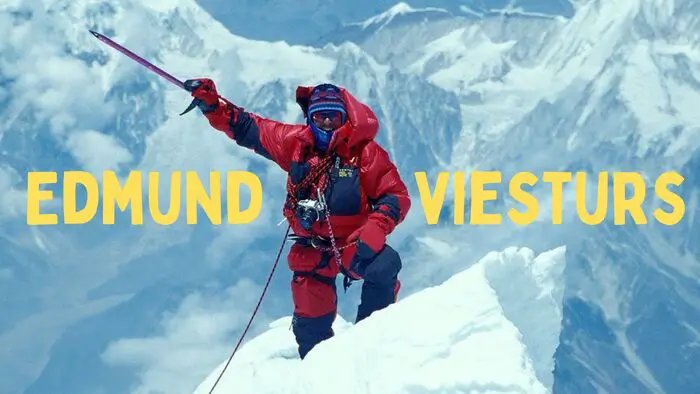Born on June 22, 1959, Edmund Viesturs is a prominent figure in the world of high-altitude mountaineering. He is distinguished as a seasoned mountaineer, motivational speaker for corporations, and acclaimed author within the mountain climbing community. Notably, he holds the distinction of being the sole American to conquer all 14 of the world’s awe-inspiring eight-thousander mountains, and an even rarer accomplishment, he achieved this feat without relying on supplemental oxygen, joining an elite group of only five individuals and solidifying him among the most famous climbers of Everest.
Teaming up with Apa Sherpa, Viesturs has reached the summits of peaks surpassing 8,000 meters on an astounding 21 occasions, which includes a remarkable seven successful ascents of Mount Everest.
Beyond his mountaineering endeavors, Viesturs made a cameo appearance in the year 2000 Hollywood blockbuster “Vertical Limit.” Additionally, in the 2015 remake of “Everest,” recounting the events of the 1996 Mount Everest disaster, the character of Viesturs was portrayed by Clive Standen.
Early Life of Ed Viesturs:
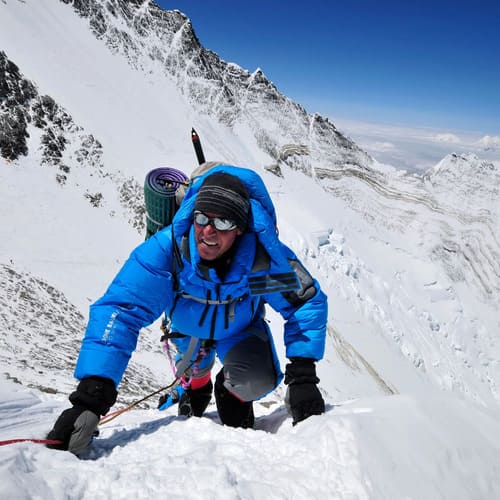
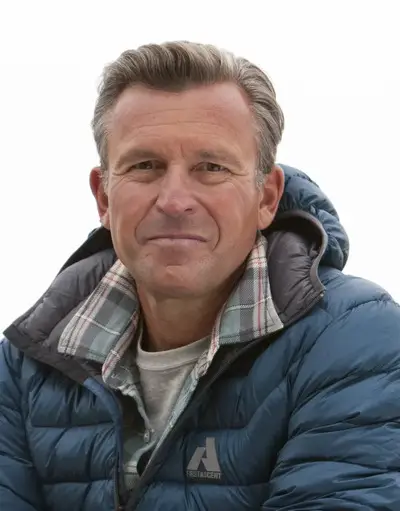
Born in Fort Wayne, Indiana, Edmund Viesturs comes from a background of Latvian and German heritage. In pursuit of higher education and a passion for mountaineering, Viesturs moved to Seattle, Washington, in 1977 to enroll at the University of Washington. It was within the picturesque landscape of this region that he first delved into his mountaineering journey, honing his skills on the challenging slopes of Mount Rainier.
In 1981, Viesturs successfully graduated from the University of Washington, earning a Bachelor of Science degree in zoology. Following his academic achievements, he commenced his professional career as a guide for Rainier Mountaineering, where he furthered his expertise and experience in the realm of mountaineering.
Undeterred by the challenges of combining his passion for climbing with his academic pursuits, Viesturs’s dedication and determination led him to attain a Doctor of Veterinary Medicine degree from Washington State University.
Overall, Viesturs’ journey from the Midwest to the majestic mountains of Washington State, and his academic and mountaineering accomplishments, have shaped him into the renowned high-altitude mountaineer and adventurer we know today.
Edmund Viesturs: A Himalayan Journey
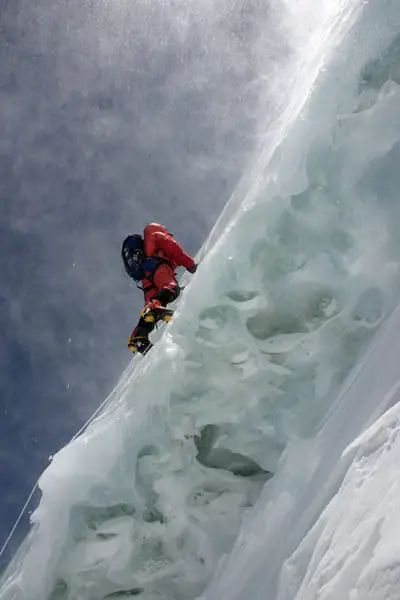
In high school, Edmund Viesturs’ fascination with the Himalayas was ignited by Maurice Herzog’s gripping account of the inaugural ascent of Annapurna.
In the years that followed, Viesturs conquered Kangchenjunga in 1989, Mount Everest in 1990, and K2 in 1992. These triumphs earned him international recognition, and he received sponsorship to pursue mountaineering as a full-time pursuit.
During the 1995 Everest expedition, Viesturs assumed the role of guide for Rob Hall’s esteemed Adventure Consultants, contributing his expertise to the endeavor. Additionally, he formed a formidable climbing partnership with Finnish mountaineer Veikka Gustafsson.
In 1992, Viesturs demonstrated his selflessness and compassion when he, along with American Scott Fischer, assisted French climber Chantal Mauduit, who was suffering from exhaustion after her successful summit of K2.
The 1996 Everest Disaster marked a significant event in Viesturs’ mountaineering career. He was part of the IMAX climbing team at that time. The team’s plans were disrupted by a blizzard during the filming of a documentary about Everest by David Breashears. In a remarkable display of camaraderie and courage, Viesturs and his teammates postponed their filming mission to aid stranded climbers. Eventually, they decided to press on, culminating in a successful summit of Everest on May 23, 1996.
Viesturs’ remarkable achievements and contributions to mountaineering were not only captured in the IMAX documentary but also featured in the Nova television documentary titled “Everest: The Death Zone” (1998). In collaboration with David Breashears, Viesturs undertook the ascent of Everest, subjecting himself to physical and mental tests to study the effects of altitude on the human body.
Throughout his career, Edmund Viesturs has consistently demonstrated extraordinary skill, compassion, and a commitment to exploring the limits of human endurance in the world’s most challenging mountain environments.
Ed’s Personal Account of the 1996 Mount Everest Disaster
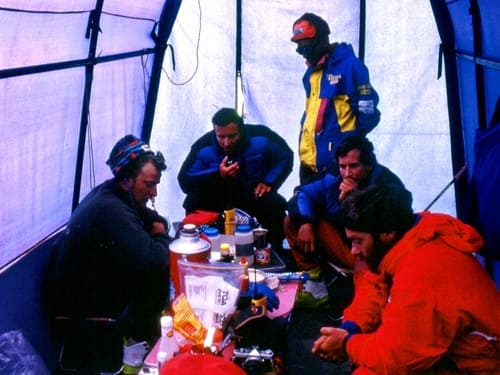
That spring, the south side of Mount Everest saw a notable increase in climbers compared to previous years. The region hosted a diverse array of teams, including a Taiwanese group comprising 13 members, a South African team with 21 climbers, and a coalition of British, Danish, and Finnish mountaineers totaling nine individuals. Among them was also an American team of six, alongside a maverick adventurer named Göran Kropp from Sweden, who had an ambitious plan to bike all the way from Sweden to Everest and conquer the mountain solo, aiming to create history with his daring endeavor.
In addition to these teams, the area was abuzz with other notable Everest expeditions, including a 12-person IMAX team, led by various experienced climbers. Among them were Scott Fischer and Rob Hall, both of whom shared a special bond with each other and had been partners in Himalaya climbing in the past.
The Day of The Disaster:
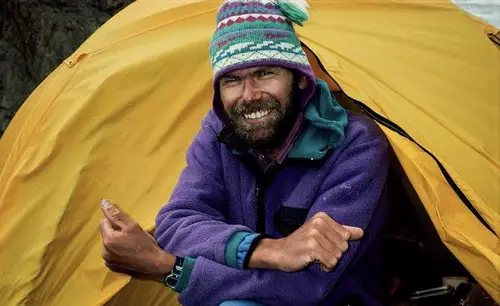

On May 8, instead of ascending towards the South Col, the group decided to descend along the fixed ropes. As they made their way down, they encountered the teams led by Rob and Scott, who were heading up the mountain. The leaders of the other teams were taken aback by the decision and asked about their plans. My response was clear, “Going down. It just doesn’t feel right.”
This unexpected choice sparked surprise and raised doubts in the minds of the group. They began to question if they were missing their one opportunity to reach the summit. However, having experienced summit fever in the past, I knew the dangers of succumbing to peer pressure. The phenomenon of climbers being influenced by others’ decisions and feeling compelled to follow suit was well known, but on Everest, each individual has to take responsibility for their own choices.
On the morning of May 10, they were aware that Rob’s and Scott’s teams had likely begun their ascent to the summit from the South Col around midnight. The weather was perfect, making it an ideal day for the summit push.
Around 2 p.m., climbers could be seen as tiny red and yellow specks scattered along the high ridge through the telescope. The climbers appeared to be waiting their turns to tackle the challenging Hillary Step. However, they noticed with concern that much of the time, these specks were stationary, not making progress. The dreaded traffic jam on the mountain had begun to cause delays and complications.
Caught in the Storm:
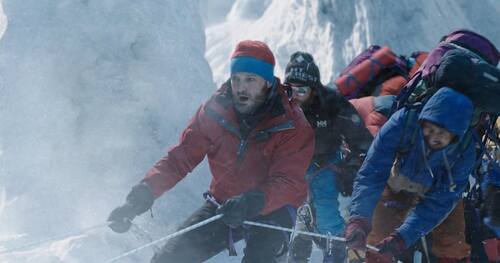
As the storm rolled in, the summit disappeared, visibility diminished rapidly, and even below the South Col, climbers were cut off from the outside world. Chaos unfolded higher up as radio batteries began to die, leaving the people in the base camp unknown about the situation. Camp II became a place of waiting and increasing somberness.
Finally, at 10 p.m., they received news from Paula over the radio: only half of those who had set out from the South Col that morning had returned. At the summit of the Hillary Step, Doug Hansen encountered a distressing situation as he collapsed. Rob, his guide, faced a difficult predicament as he was unable to lower his client down the 40-foot (12-meter) cliff.
Despite the risks involved in an overnight stay well above 28,000 feet (8,534 meters), Rob chose to remain with Doug, demonstrating his commitment to ensuring his client’s safety.
A Desperate Plea: The Struggle on Mount Everest
At Base Camp, Guy Cotter overheard Rob’s faltering radio communications and took action, pleading with his old friend to leave Doug and descend to the South Summit. Guy wanted Rob to retrieve the oxygen bottles so he could regain strength and assist his client. Rob responded, stating that he could make it to the South Summit, but Doug couldn’t. Despite time passing, Rob remained stationary.
At 2:45 a.m., Guy picked up intermittent transmissions from Rob, who seemed to be struggling in the storm. Rob’s words were barely audible amid the howling wind, but it appeared he was urging Doug to keep moving down to the South Summit during the night, despite the challenging conditions.
Unaware of the unfolding events, those at Camp II finally heard Rob’s despairing radio call at 5 a.m., in which he uttered the heartbreaking words, “I’m all f—ed up.” By morning, Rob had descended about 350 vertical feet (107 meters) and reached a point just shy of the South Summit. He had endured a night without any shelter, and Doug was gone.
Receiving communication from Rob, the team felt encouraged to learn that he had found two full oxygen bottles at the South Summit. Despite the team’s urging over the radio to start descending down the ridge, Rob remained stationary even after several hours. Realizing that Rob’s best chance of assistance was from the Sherpas, the team sprang into action. David Breashears, Robert Schauer, Araceli Segarra, Veikka Gustafsson, and Ed decided to mobilize themselves and head up the fixed ropes on the Lhotse Face towards Camp III.
A Fateful Day on Everest: Farewells and Desperate Efforts
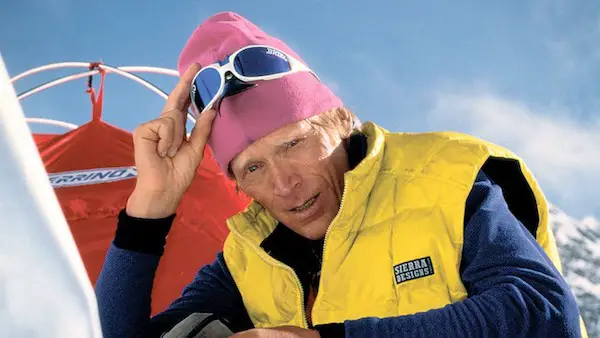
At 6:20 p.m., Guy managed to contact his wife, Jan, via satellite phone from New Zealand. Their farewell conversation became an iconic moment in Everest’s history. Knowing the grim reality, Jan, who had also summited Everest, exchanged final words of love and reassurance with Rob. Soon after, Rob’s communication ceased, and his fate remained uncertain.
Meanwhile, the team was increasingly concerned about Scott. Lacking a functioning radio, Scott’s situation was unknown. Later accounts revealed that he lingered on the summit for a short time, expressing distress about his condition. With the help of Sidar Lopsang Jangbu Sherpa, he made some descent but ultimately collapsed, urging Lopsang to seek assistance from Anatoli Boukreev.
The next morning, Sherpas attempted to rescue Scott, finding him in critical condition. Despite efforts to administer oxygen, his condition deteriorated. Anatoli, determined to save Scott, made a final attempt but arrived too late. In a heart-wrenching moment, he covered Scott’s face with his backpack before descending to the South Col.
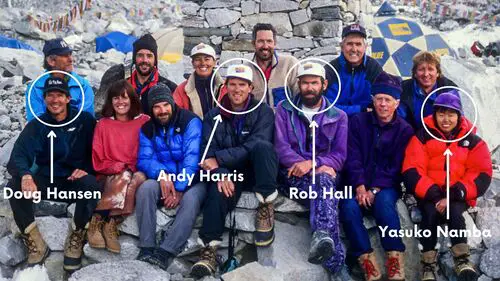
In a way, Scott had begun to underestimate the challenges of Everest. He would humorously refer to the South Col route as the Yellow Brick Road to the summit, implying it was an easy path. Similarly, after the successful ’94 expedition, Rob had boasted of a “100 percent success rate” for Adventure Consultants‘ clients on Everest. However, fate played a significant role. Had it not been for the sudden and violent storm that struck on May 10, both Rob and Scott might have managed despite their late summit attempts.
By May 12, tragedy had struck, claiming the lives of five climbers from the two teams. Among the victims were both leaders, Andy Harris, Rob’s fellow guide, along with his client Yasuko Namba, and, devastatingly, Rob’s client and close friend Doug Hansen. The deadly spring season of 1996 would ultimately claim the lives of 12 aspiring climbers on Everest.
Edmund Viesturs: Conquering Peaks, Rescues, and Guiding Aspirations
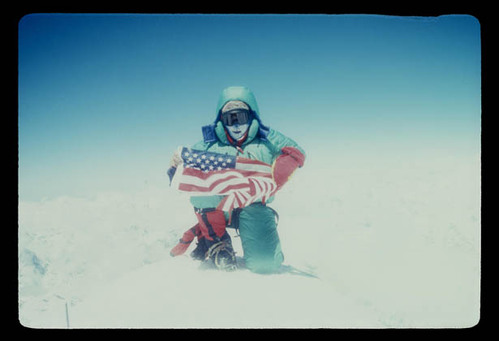
In July 2003, Edmund Viesturs and a Kazakh team, led by Denis Urubko, played a pivotal role in the rescue of French climber Jean-Christophe Lafaille from Broad Peak. Lafaille had succumbed to high-altitude pulmonary edema, leaving him unable to complete his descent. Viesturs and the team had a successful rescue, ensuring Lafaille’s safe evacuation from the mountain via helicopter.
In 2005, Viesturs etched his name in mountaineering history by becoming the first American, and only the 12th climber globally, to conquer all 14 majestic peaks towering above 8,000 meters, collectively known as the “eight-thousanders.” Notably, he accomplished this without relying on supplemental oxygen, joining a select group of only five climbers to achieve this remarkable milestone. Among these achievements, Viesturs proudly boasts seven successful summits of Mount Everest.
Edmund Viesturs has continued to leave his mark on the world’s highest peaks. In 2009, he conquered Broad Peak, the 12th highest mountain globally, and Nanga Parbat, the ninth highest mountain. In 2005, he stood atop Annapurna, the 10th highest mountain in the world. Later in 2009, he scaled Mount Everest for the seventh time.
Outside of his personal pursuits, Viesturs generously led an expedition to Mount Rainier on July 8, 2009, as part of the United Way Climb for the Community initiative. In this charitable endeavor, figures like UCLA coach Jim Mora, Seahawks CEO Tod Leiweke, and NFL commissioner Roger Goodell joined forces with Viesturs to summit the 14,410 ft peak.
Ever eager for new challenges, Edmund Viesturs embarked on an expedition to Antarctica in January 2011, with the objective of conquering its highest peak, Vinson Massif. With an ever-growing list of accomplishments, Viesturs continues to inspire and guide others in their mountaineering aspirations. Today, he serves as a guide for RMI Expeditions, sharing his wealth of experience and expertise with fellow climbers, fostering a legacy that will endure for generations to come.
